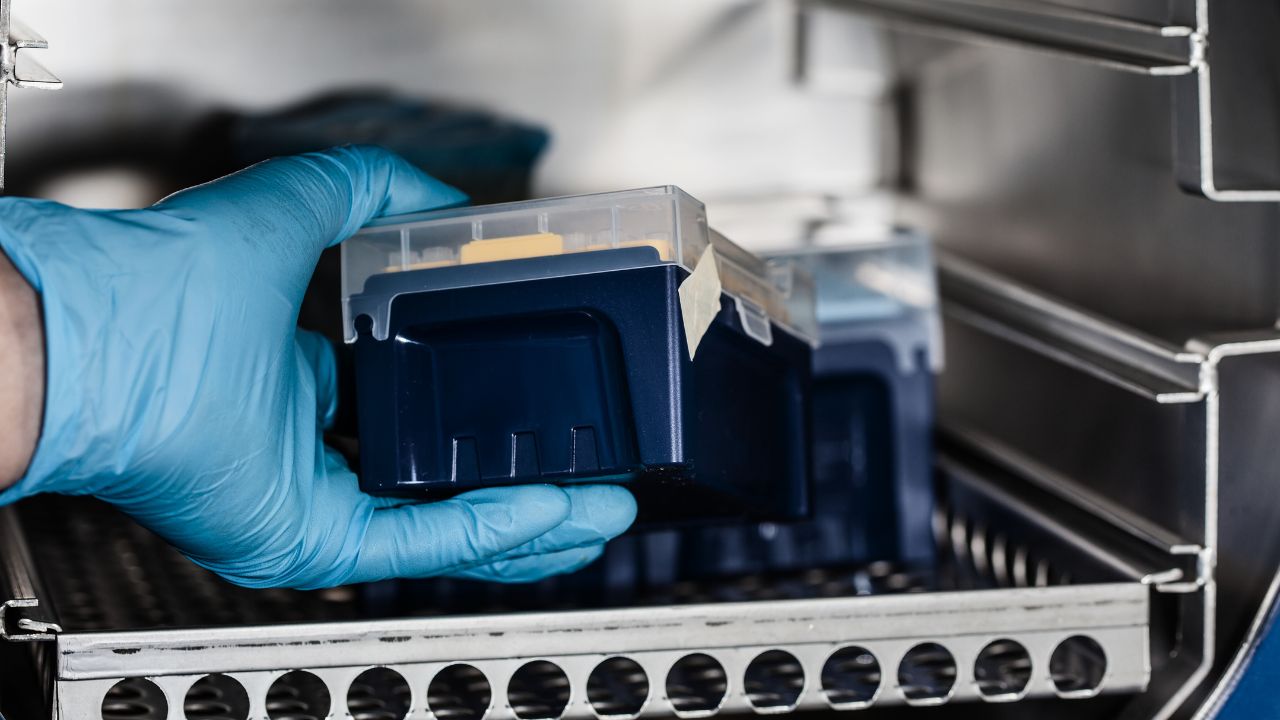How to Store Mushroom Spores
In this comprehensive guide, we will explore the best methods for preserving mushroom spores.
Learn how to store and maintain the viability of these fascinating fungi through proper storage techniques.
Preserving mushroom spores is crucial for cultivating your own mushrooms, and this guide will ensure you know how to do it right.
Contents
- 1 How long can mushroom spores be stored?
- 2 Can I store mushroom spores in a regular plastic container?
- 3 What is the ideal temperature for storing mushroom spores?
- 4 Can mushroom spores be stored in the freezer?
- 5 Understanding Mushroom Spores
- 6 Harvesting Mushroom Spores
- 7 Choosing the Right Storage Medium
- 8 Proper Storage Conditions
- 9 Storing Mushroom Spores Long-Term
- 10 Conclusion
Key Takeaways:
- Storing mushroom spores requires proper techniques and conditions to maintain their viability.
- Harvesting spores should be done carefully to avoid contamination.
- Choosing the right storage medium impacts the longevity of stored spores.
- The ideal temperature, humidity, and light conditions are essential for proper storage.
- Proper packaging and labeling techniques can ensure long-term viability of stored spores.
How long can mushroom spores be stored?
Mushroom spores can be stored for several years if proper storage conditions are maintained.
The viability of spores may decrease over time, but with the right storage techniques, they can remain viable for an extended duration.
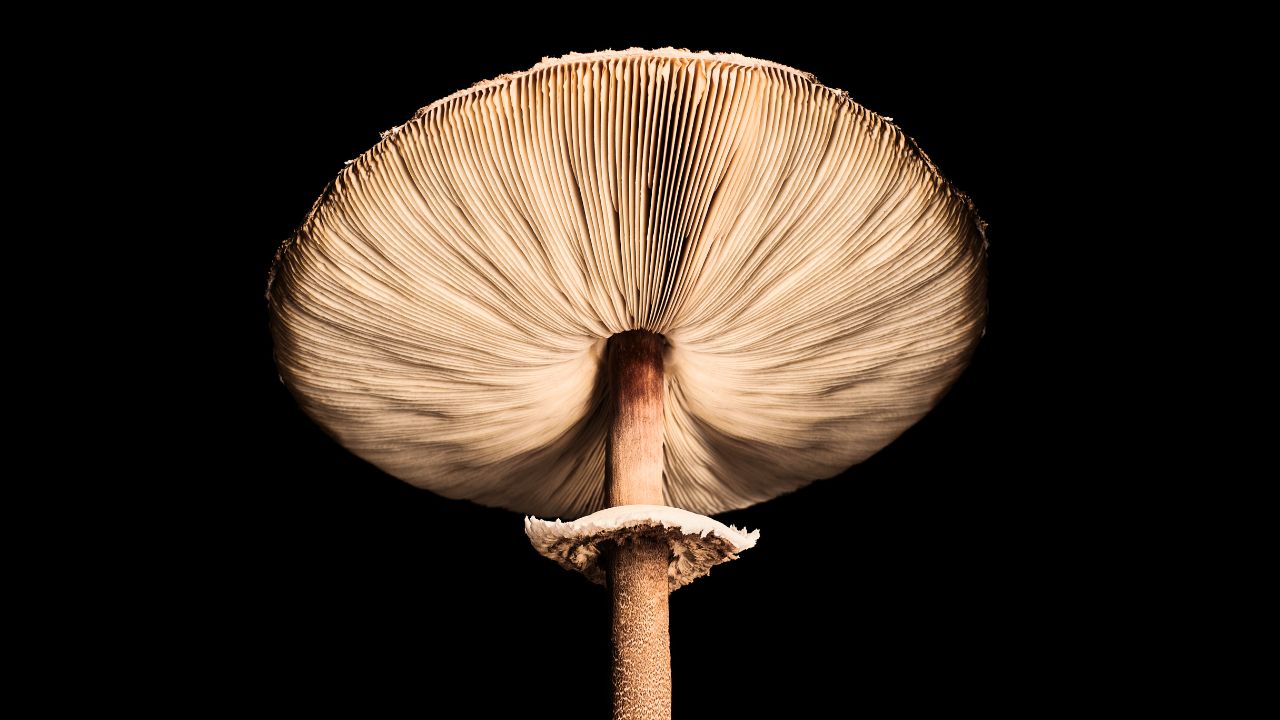
Can I store mushroom spores in a regular plastic container?
It is not recommended to store mushroom spores in regular plastic containers as they may not provide an airtight and sterile environment.
It is best to use sterile containers to minimize contamination and ensure spore viability.
What is the ideal temperature for storing mushroom spores?
The ideal temperature for storing mushroom spores is typically between 35°F (2°C) and 45°F (7°C).
It is important to avoid extreme temperature fluctuations as they can damage the spores.
Refrigerators are often a suitable storage option for maintaining the desired temperature.
Can mushroom spores be stored in the freezer?
While storing mushroom spores in the freezer is possible, it is generally not recommended.
The freezing process can damage spores and reduce their viability.
It is best to store spores in a cool and stable environment, such as a refrigerator, to maintain their integrity.
Understanding Mushroom Spores
Mushroom spores are reproductive units that enable mushrooms to reproduce.
When a mushroom produces spores, they are dispersed by the wind or carried away by animals to a new location, where they serve as the starting point for a new mushroom.
Spores are tiny, often measuring less than one micron in size, and are usually formed on the gills or pores of a mature mushroom.
Spore formation is a natural process that takes place during the lifecycle of mushrooms.
During this process, the mushroom releases millions of spores into the air.
These spores can vary widely in shape, size, and color, depending on the type of mushroom.
When the spores land on a suitable substrate, they germinate and grow into new mycelium, which eventually forms a new mushroom.
Preserving mushroom spores is crucial for future cultivation.
Without the spores, it would be impossible to reproduce mushrooms in an artificial setting.
This could have serious consequences for agricultural and medicinal industries, as many valuable compounds are derived from mushrooms.
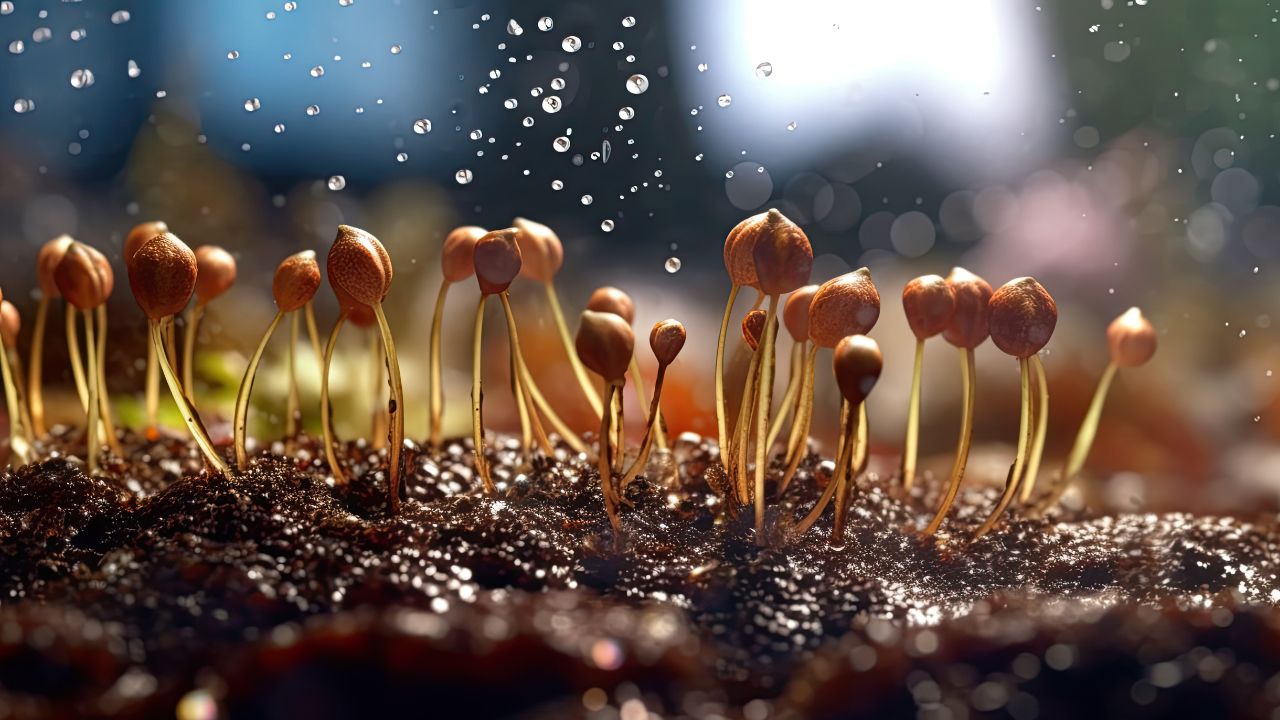
Harvesting Mushroom Spores
Harvesting mushroom spores is an art that requires careful attention to detail.
To collect spores safely from mature mushrooms, you will need several tools at your disposal.
Tools:
- Sharp knife
- Clean, sterilized container with lid
- Fine-tipped brush or cotton swab
To begin, select a mushroom with mature, intact caps.
Once you have identified your specimen, use a sharp knife to cut the cap off at the stem.
Be careful not to damage the cap, as this could affect spore viability.
Next, place the cap gills side down on a clean, sterile surface.
Cover it with a clean, sterilized container for four to six hours to allow the spores to fall off naturally.
You can also tap the cap gently to encourage the spores to drop.
Once you have collected spores, they must be transferred to a sterile container for proper storage.
Use a fine-tipped brush or cotton swab to sweep the spores into your container, taking care not to introduce any contaminants.
Label the container with the date and mushroom variety for future reference.
Now that you’re equipped with the necessary tools and techniques to harvest mushroom spores, you can proceed to store them safely and maximize their longevity.
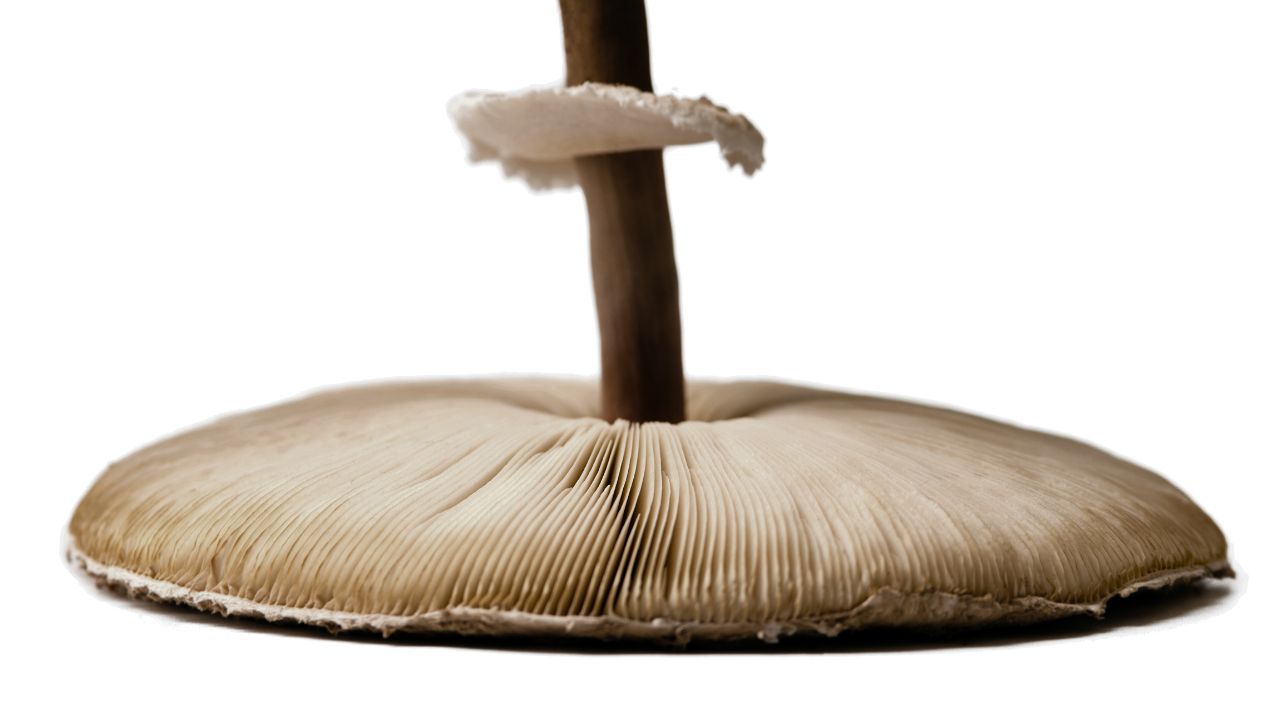
Choosing the Right Storage Medium
Preserving mushroom spores can be a challenging task, and choosing the right storage medium is an essential aspect of maintaining their longevity and viability.
Whether you’re a seasoned cultivator or a beginner, it’s crucial to understand the different types of storage mediums available for mushroom spores.
In this section, we will explore the most common options along with their respective pros and cons.
Sterile Water
One of the most straightforward storage methods is using sterile water.
By suspending mushroom spores in pure distilled or sterile water, you can prevent contamination while preserving spore viability.
However, sterile water doesn’t provide the nutrients necessary for spore germination, which can lead to longer germination times and less successful mycelium growth.
Filter Paper
Another popular option is using filter paper, which is readily available and easy to handle.
This method involves placing small pieces of filter paper saturated with spore solution in sterile containers.
Although filter paper ensures adequate ventilation and moisture retention, the delicate spores can stick to the paper, making it challenging to collect them later.
Agar
Agar is a commonly used storage medium in microbiology, making it ideal for preserving mushroom spores.
This gelatinous substance provides essential nutrients required for spore germination and growth.
It also prevents spores from sticking to surfaces and allows for easy transportation.
However, agar can be difficult to work with, and the preparation process requires specific equipment and expertise.
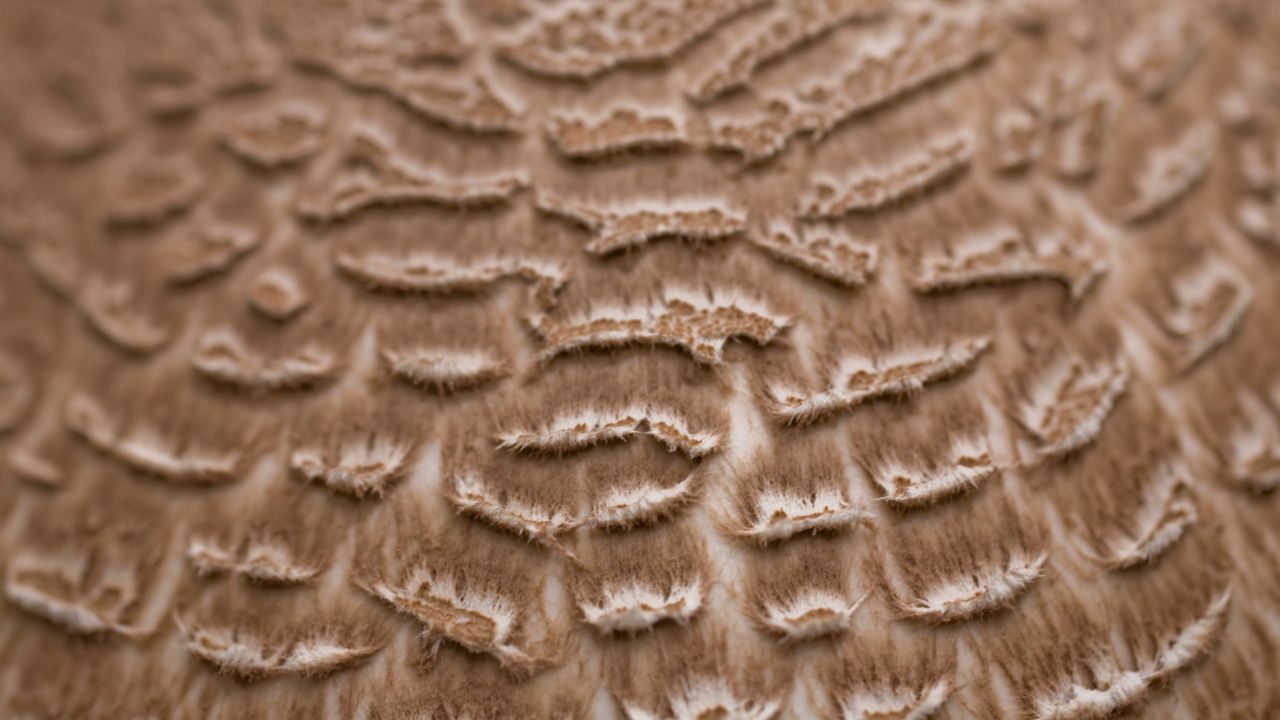
Proper Storage Conditions
Once you have harvested and chosen the right storage medium for your mushroom spores, it’s essential to store them in proper conditions to maximize their viability and longevity.
The optimal temperature for storing most mushroom spores is between 32°F-41°F (0°C-5°C). Avoid exposing them to extreme temperatures, which can cause damage to the spores, rendering them useless.
The humidity levels should be maintained between 40-60%. High humidity can lead to spore clumping, while low humidity can cause them to dry out and lose viability.
You should also store your mushroom spores in a dark place, away from direct sunlight.
UV light can damage the spores, leading to reduced viability.
Note: It’s best to store your mushroom spores in an airtight container or a vacuum-sealed bag to prevent moisture and air from entering, which can affect their potency.
Storing Mushroom Spores Long-Term
If you want to preserve your mushroom spores’ viability for a long time, you need to follow the correct storage techniques.
Proper packaging and labeling are essential to keep different samples separate and maintain their longevity.
Here are some steps for long-term spore storage:
Use sterile containers:
When storing mushroom spores, sterile containers are a must. Glass vials with screw caps work well for small spore prints, but mason jars or petri dishes can store larger quantities of spores. Be sure to clean and sterilize the containers thoroughly before use.
Add desiccants:
Once you have placed your spores in the container, make sure to add desiccants to keep them dry. Silica gel packs or rice grains work well to absorb any excess moisture and prevent the spores from clumping together.
Label the containers:
Proper labeling is crucial when storing different spore samples. Make sure to write down the strain, date of collection, and any other pertinent information on the container. This will help you keep track of your spores and ensure they are viable for future cultivation projects.
How can I label my stored mushroom spores?
Proper labeling is essential for keeping track of different spore samples.
Label each storage container with the date of collection, mushroom species, and any other relevant information.
Using waterproof labels or writing on the container with a permanent marker can help prevent smudging and ensure legibility.
Store the containers in the right environment:
Choose an appropriate place to store your spore containers. The temperature should be around 40-50°F (4-10°C), and humidity levels should be less than 30%. Keep the containers away from direct sunlight, as UV radiation can reduce spore viability over time.
Check on your containers periodically:
Once you have placed your spores in storage, make sure to check on them periodically. Inspect the containers for any signs of contamination or moisture buildup. If you notice any issues, transfer the spores to new containers to prevent further degradation.
Implementing these proper storage techniques will help you preserve your mushroom spores’ viability for an extended duration.
With a little care and attention, you can ensure your collection will stay thriving and ready for future cultivation projects.
Conclusion
Congratulations on completing this comprehensive guide on how to preserve mushroom spores!
You now have a better understanding of the importance of spore preservation and the techniques required to maintain their viability for future cultivation.
Remember to always use sterile tools and equipment when harvesting spores to prevent contamination.
Choosing the right storage medium and maintaining proper storage conditions are critical components of long-term spore storage.
By following our expert advice and taking the necessary precautions, you can ensure the longevity of your spore collection.
With your preserved mushroom spores, you can embark on exciting cultivation projects and explore the wonders of fungal reproduction.
Don’t hesitate to refer back to this guide whenever you need a refresher on the best practices for storing mushroom spores.
We hope you found this guide informative and helpful in your preservation endeavors!

